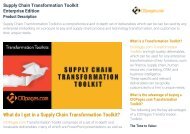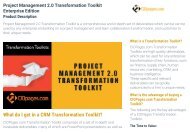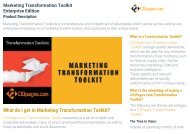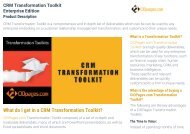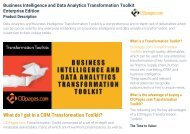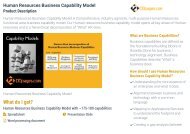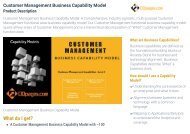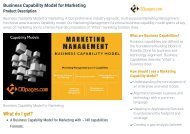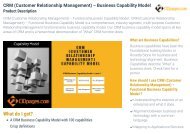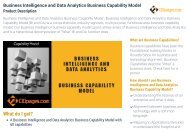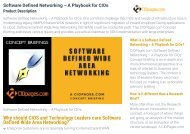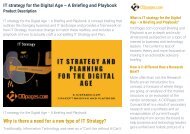Finance and Accounting Business Capability Model
The CIOPages.com Finance and Accounting business capability model is hierarchically decomposed list of capabilities which captures the end-to-end entities that span the finance and accounting function. Visit: https://www.ciopages.com/store/finance-accounting-business-capability-model/
The CIOPages.com Finance and Accounting business capability model is hierarchically decomposed list of capabilities which captures the end-to-end entities that span the finance and accounting function. Visit: https://www.ciopages.com/store/finance-accounting-business-capability-model/
You also want an ePaper? Increase the reach of your titles
YUMPU automatically turns print PDFs into web optimized ePapers that Google loves.
Formats included :<br />
A Spreadsheet with business<br />
capabilities <strong>and</strong> worksheets to<br />
conduct an assessment <strong>and</strong><br />
document associations<br />
<strong>Capability</strong> Management in a Box<br />
DETAILS<br />
Presentation slides with a visual<br />
nested list<br />
Word document in a multi-level list<br />
format<br />
Looking for more? Try our <strong>Capability</strong> Management in a Box…or<br />
rather in a Spreadsheet. Learn more<br />
Why do we need a <strong>Finance</strong> <strong>and</strong> <strong>Accounting</strong> <strong>Business</strong><br />
<strong>Capability</strong> <strong>Model</strong>?<br />
The value of business capabilities is undisputed as they help bridge the gap<br />
between business <strong>and</strong> IT, help underst<strong>and</strong> the essence of what a business<br />
does, <strong>and</strong> align development efforts to strategic priorities, which helps evolve<br />
<strong>and</strong> enhance capabilities.<br />
Ideally, your firm should have a structured <strong>and</strong> well-defined enterprise business<br />
capability model. And furthermore, for the capability model to the actionable, it<br />
should be decomposed to a granular level of capabilities (at least Level 3 <strong>and</strong><br />
some times to Level 4) for it to be practical <strong>and</strong> to be able to leverage in IT<br />
enablement projects.As we discussed before, <strong>Finance</strong> <strong>and</strong> <strong>Accounting</strong> has<br />
emerged as a key function which orchestrates organizational resources with<br />
the aim of elevating corporate performance.<br />
capability evolution, not silo’ed<br />
project execution<br />
Using capabilities as Lego blocks,<br />
business owners <strong>and</strong> product<br />
managers can communicate their<br />
needs better so as to allow for<br />
optimal technology enablement.<br />
A detailed capability model helps in<br />
vendor evaluation <strong>and</strong> selection.<br />
It helps you identify conflicts,<br />
overlaps <strong>and</strong> redundancies <strong>and</strong><br />
zero in on the weak areas so as to<br />
develop a roadmap to evolve the<br />
capabilities.<br />
Will a generic <strong>Business</strong> <strong>Capability</strong><br />
Map fit our unique needs?<br />
The goal of CIOPages.com business<br />
capability maps is to meet or beat a<br />
threshold of 75-80% relevance. There<br />
is always that 20-25% that may need<br />
to be modified <strong>and</strong> customized to<br />
capture the unique essence of your<br />
enterprise. In addition, having a prebuilt<br />
straw model helps in a) not<br />
missing out on the core <strong>and</strong> obvious<br />
business capabilities <strong>and</strong> b) spend



